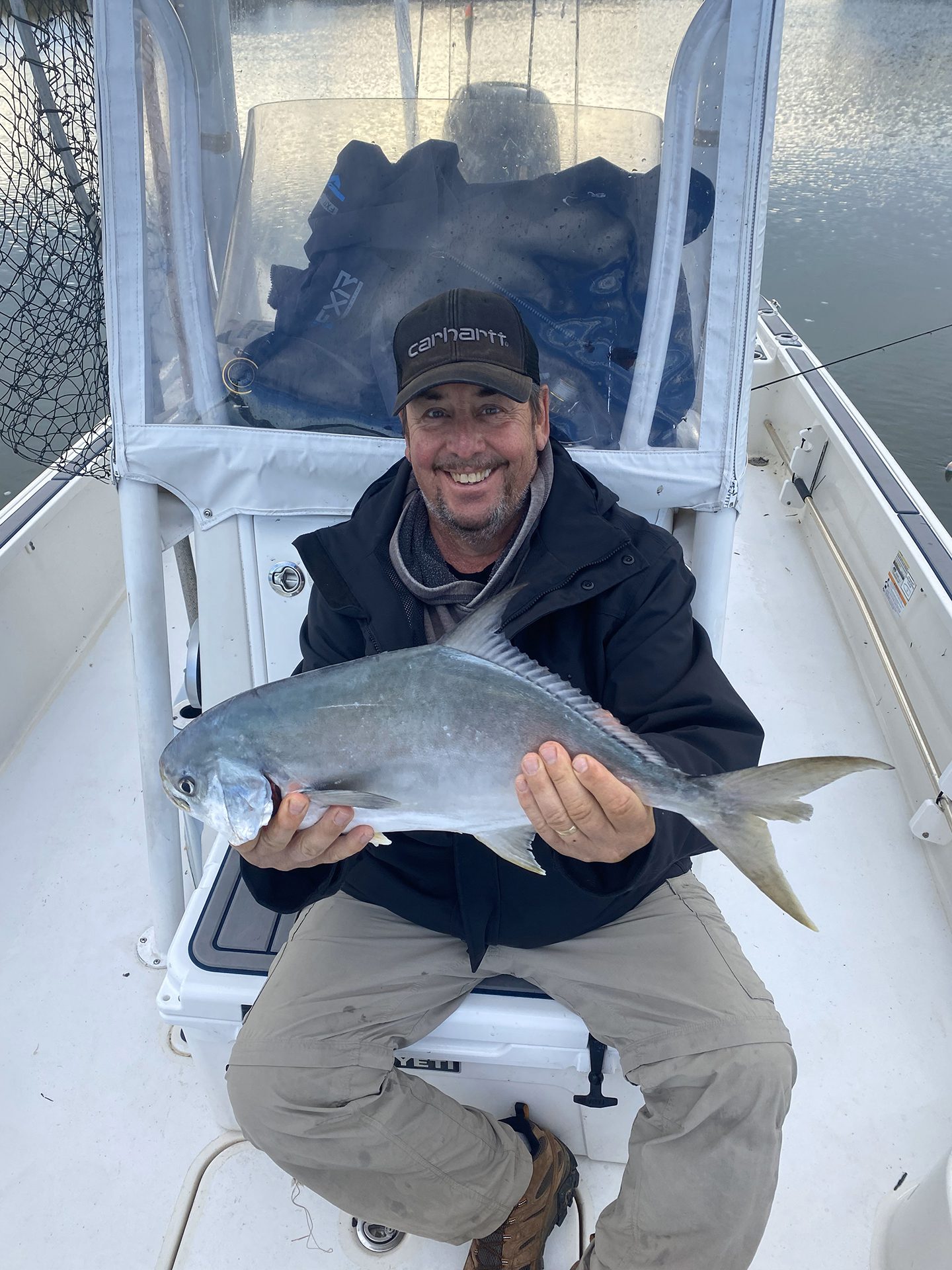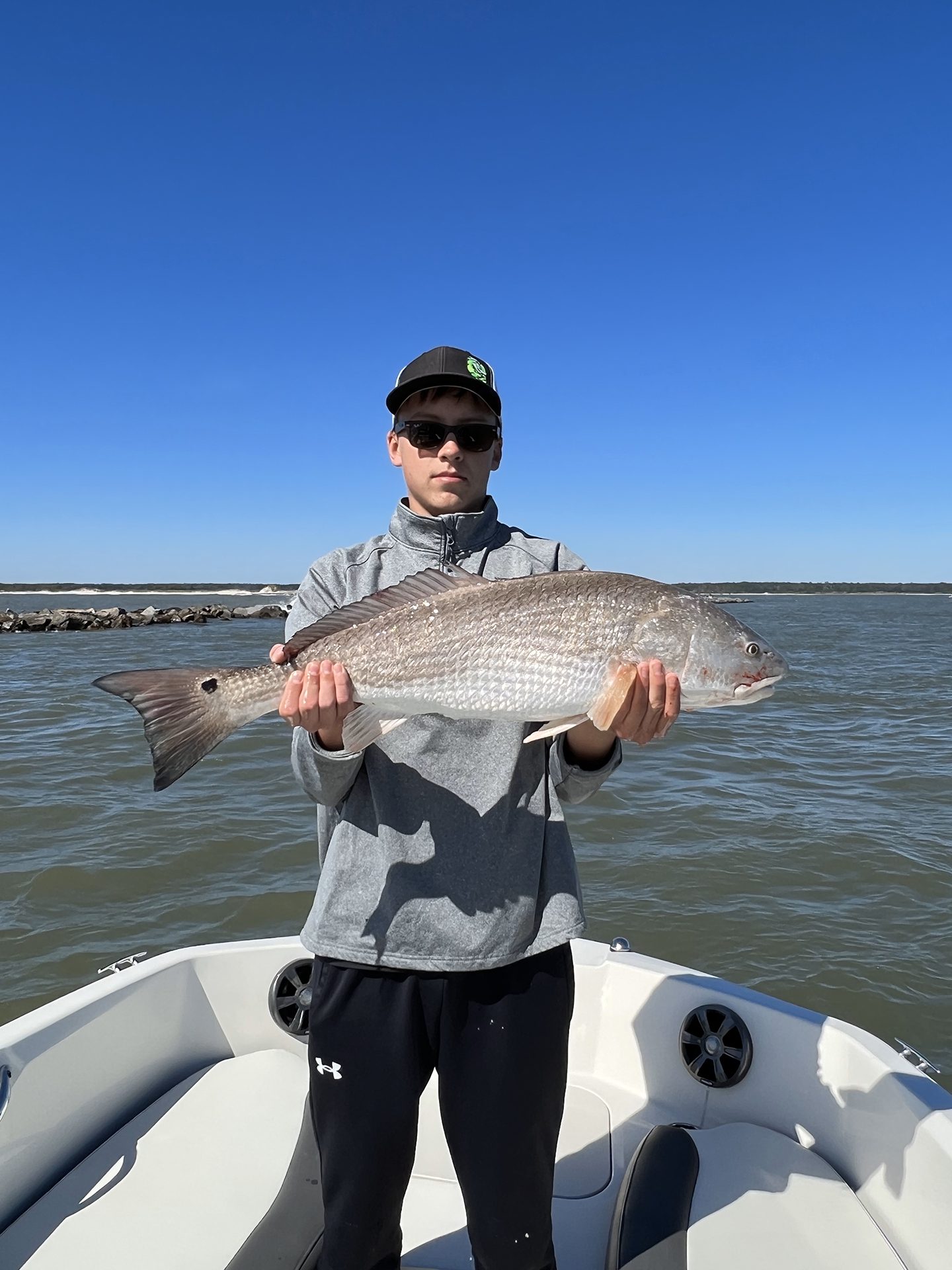North Myrtle/Little River – March 2024
Chris, of Fine Catch Fishing Charters, reports that anglers fishing along the ICW are finding plenty of smaller reds and sheepshead, with a few keeper-sized black drum holding on docks and other hard structures. The best bait has been live or fresh dead shrimp on a Carolina rig for all three species, but if you’re targeting just the redfish, you can also catch them on mud minnows or Gulp shrimp.
With the water temps hanging around 55 degrees, there has been some trout hanging around the drop-offs and deeper structure in the ICW. As the water temps start to rise, you should see these fish become more active and move up to shallower water around docks and scattered oyster beds. Target the trout using a slip cork rig with live shrimp, and drift your bait near the bottom.
In the creeks, there are still good numbers of redfish, with a few trout and black drum mixed in some of the deeper holes. These redfish will hit anything from cut shrimp to artificial Gulp baits.
For the trout and black drum, you can’t go wrong with a live shrimp on a jig head or floated under a cork just off the bottom.
Anglers targeting the Little River jetties have probably found the most consistent bite. There are good numbers of keeper trout and black drum, with the scattered redfish or sheepshead. The easiest way to fish this area is with a slip cork and live shrimp. Float it just off the edge of the rocks in moving water.
Moving later into March, we should start to see some of these black drum and sheepshead around the area’s 3-mile reef structure. Many of these fish are going to be mature, breeding fish, so the quality will be good. Catching these fish can be a little tricky with all the aggressive smaller sea bass around. The best way is with Carolina-rigged fiddler crabs or mud crabs laid on the bottom right off the side of the main structure.
If you want to catch some keeper black sea bass, they’re out in the 60-80’ range. The deeper you go, the better the quality (typically). Don’t be afraid to drop a bigger bait to try and weed out the smaller fish.

Mark Dunlap hauled in this 5.18 lb. pompano in a creek near Sunset Beach using live shrimp. He was fishing with Capt. Tripp Hooks of Capt’n Hook Outdoors.
Buddy, of Captain Smiley Fishing Charters, reports that anglers have been finding a bunch of red drum scattered in the skinny water as these fish look to start breaking out of their wintering patterns. Cut mullet or cut shrimp has been best to entice strikes under the current conditions.
The black drum are mixed in the same areas, and cut shrimp will get them to bite.
Speckled trout are being caught way back in the creeks, and having live bait has been key to success.
Greg, of Dave’s Outpost, reports that inshore anglers have done really well targeting speckled trout. The numbers may not be crazy, but the quality of these fish has been great.
Some slot-sized red drum are being caught both back in the marshes and along the ICW.
Black drum are staged up around structure, whether docks, oyster beds, or rocks.
Moving into March, the speckled trout fishing gets better as the warmer water gets the fish more active.
Bob, of Strange Magic Fishing Charters, reports that there are some speckled trout way back in the creeks in the deeper holes, but know that these fish have seen a lot of pressure over the winter.
Some big schools of reds are way back in the creeks as well. Similar to the trout, these fish have been worked hard by anglers and dolphins alike and are easily spooked. Being really stealthy is key to finding some willing strikes.
Some reds and trout are being caught around the Little River jetties by anglers rigged with live shrimp or live mud minnows.
Runs out to the nearshore reefs (such as the Jim Caudle) have produced black sea bass.
When water temperatures get back over 60 degrees, the bait starts showing back up inshore and the fishing really turns on.
Bigger black drum return, and the trout and redfish begin breaking out of their winter schools and spreading out through the area. In addition, the flounder move back in and feed with a vengeance.
Bevan, of Chilly Water Fishing, reports that offshore bottom fishing is a great option in these months when the weather allows. Anglers have been finding some great black sea bass in the 65-100’ range. Typical of this fishery, the bigger fish are usually found on the deeper side of that spectrum. Cut squid, cut minnows, or jigs will all produce strikes.
Triggerfish are another tasty wintertime staple. Most of them will be holding the 100-120’ range and feeding on cut squid.
Larry, of Voyager Fishing Charters, reports that these early trips in March will be headed out to reefs across the 6-10 mile range in search of black sea bass, porgies, and sharks.
The deeper water trips typically kick back off in April, when anglers will be looking to target vermilion snapper, triggerfish, and grouper (when their season opens).
Atlantic bonito could also make a showing by the end of March and into early April. This action is really temperature dependent, though.
Lisa, of Apache Pier, reports that water temperatures are cold (51 degrees), and anglers getting out have been picking away at black drum and scattered smaller red drum.
Ed, of Cherry Grove Pier, reports that as the pier gets ready to open later in March, anglers look forward to getting out and targeting the bottom for whiting and croakers.

